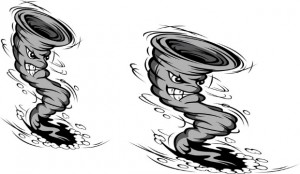 Over the past 5 to 10 years ‘alternative investments’ have been gaining more traction in investor’s portfolios. The main reason for holding these ‘alternative’ asset classes in a portfolio is to reduce risk (via low correlations to stocks and bonds) without sacrificing returns. Some have argued you can both reduce risk and increase returns by holding ‘alternatives’ in a portfolio.
Over the past 5 to 10 years ‘alternative investments’ have been gaining more traction in investor’s portfolios. The main reason for holding these ‘alternative’ asset classes in a portfolio is to reduce risk (via low correlations to stocks and bonds) without sacrificing returns. Some have argued you can both reduce risk and increase returns by holding ‘alternatives’ in a portfolio.
Many investors have now included real estate, commodities, managed futures, long-short funds, and other ‘alternative’ assets within portfolios in hope of achieving this purpose. Although some of these asset classes have merit in a portfolio, the vast majority have at least one of the following problems:
- move right along with stocks when you need diversification the most (2008) or
- over the long term do not provide attractive positive returns.
There is one asset class that our firm has identified that does not seem to possess either of these portfolio harming traits, Insurance Linked Securities. This asset class is composed of securities issued by governments or insurance companies where the issuing entity transfers some of their risk to investors in exchange for a commensurate rate of return. These ‘risks’ can be anything from hurricanes, floods, earthquakes, marine hazards, airline crashes, etc. Over the past 2 decades returns have been similar to equities with much less risk and showing no correlation to stocks or bonds (including 2008). The two main types of insurance linked securities are detailed below:
Catastrophe bonds are very short term floating rate (2-3 year) bonds issued by governments or insurance companies that are seeking to remove insurable risk ‘off their books’. In exchange for accepting this risk they offer competitive yields (6% – 8%/yr. average) which are immune from interest rate and credit risk. The only trigger that will cause a loss of principal is a disaster that causes a certain level of insurable losses. This of course has no correlation with any other financial asset.
Quota Share is an actual slice of an insurance company’s business (incoming premiums minus outgoing losses). This type of security has a higher expected return than catastrophe bonds (8% – 10%/yr. average returns) but with a higher level of risk individually. However if you compile a largely diversified basket of these shares you can reduce risk substantially. This is exactly what we are doing (investing in more than 20 unique quota shares) that span risks from Super Bowl cancellation, satellites, natural disasters, pandemics, agriculture, marine, and air travel risk.
While a typical investor has significant exposure to ‘stock market/economic’ risk and some have large exposure to ‘interest rate’ risk; very few have any exposure to ‘insurance risk’. By introducing this other type of risk that is not correlated to either the economy or interest rates we can significantly reduce risk and not sacrifice overall returns.
No asset class is perfect however, so all investors should be aware of a couple important concerns unique to these investments.
All-Or-Nothing Payoff: In the case of catastrophe bonds, the vast majority will be an all or nothing proposition in terms of payoff. If the bond triggers are not met the investor (in the vast majority of cases) gets 100% of their principal returned with full interest, but if a triggering event does occur the investor will most likely lose 100% of their principal. This makes holding any 1 bond extremely risky and unadvisable. Therefore we invest through a fund that holds many diversified bonds so if any 1 security does trigger it will have a small impact overall.
Modeling Risks: With both quota share and catastrophe bonds the climate/weather modeling that ‘creates’ the agreed upon underlying investment return/risk metrics are not perfect and are very long term orientated. What this combination creates in the short term are results that will deviate largely from long term modeled outcomes. Modeling is getting better however, and if you hold enough diversified investments the risk of any one event being modeled incorrectly is greatly mitigated.
Limited Liquidity: Liquidity is more of an issue with quota share than catastrophe bonds, as we hold catastrophe bonds through a normal open end mutual fund we can sell at any time. Even though our quota share will be held through an open end fund as well, it will only have quarterly liquidity, as quota share itself does have little interim liquidity. As an investment the timeline for the funds should be no less than 3-5 years anyway as it is important to hold through a full insurance premium cycle.
To learn more about Eric Mancini, view his Paladin Registry profile.
Other posts from Eric Mancini
How Investment Advisor Fees Add Up
In the pursuit of an investment advisor or investment manager one of the most important (and unfortunately complicated)...
Why to Invest in Alternative Investments
Over the last 2 to 3 years the percentage of our client portfolios invested in alternative investments has increased...




